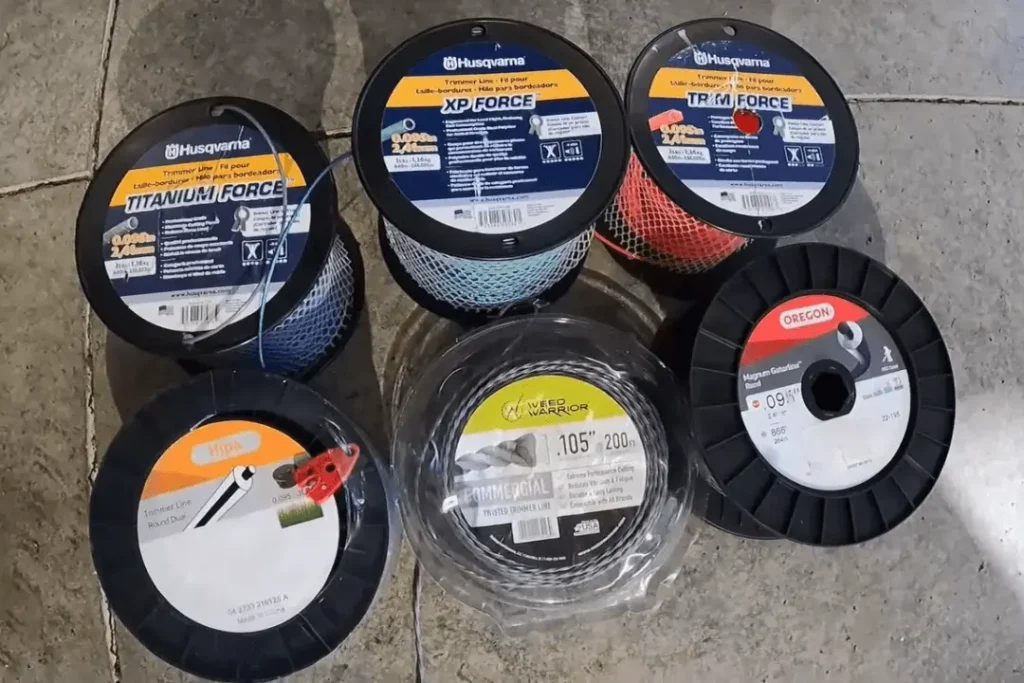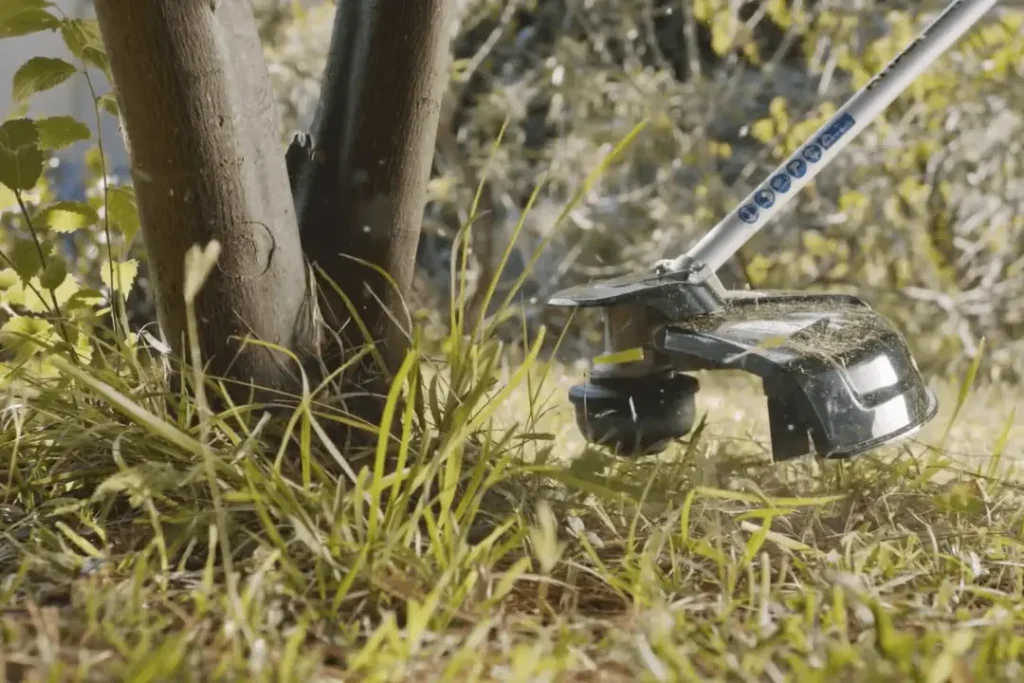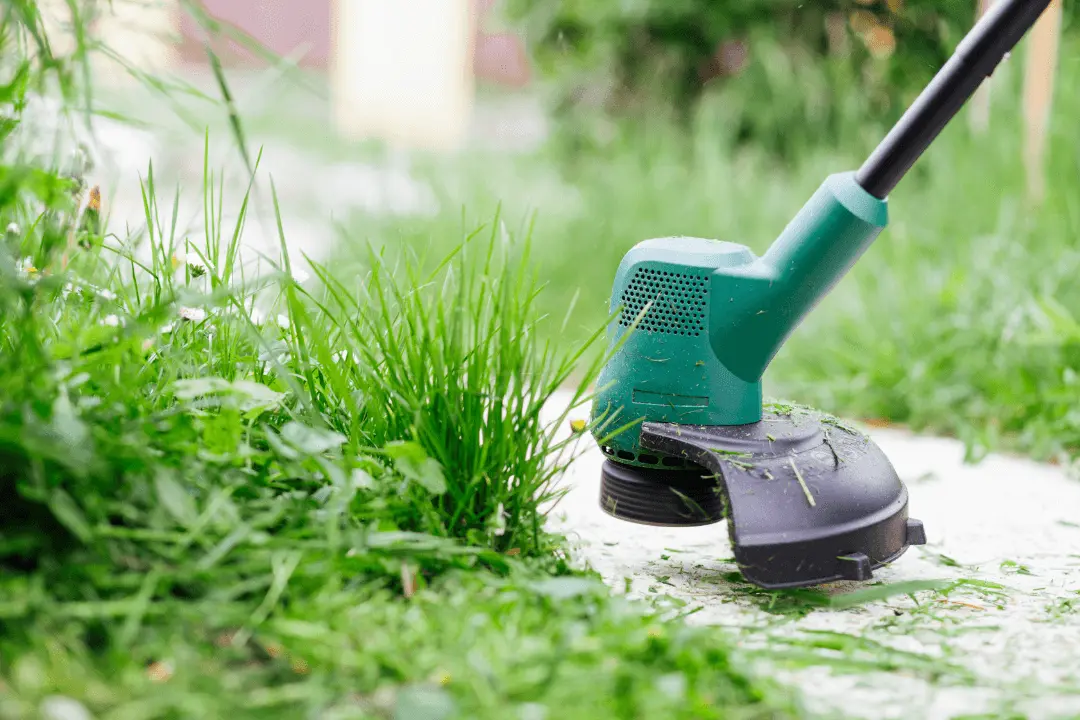The String Showdown: Choosing The Best Trimmer Line For Your Needs
Your trusted string trimmer is a must-have device to keep your lawn neat and tidy. Like any other warrior your trimmer requires the right weapon for tackling those weeds. The weapon? The best trimmer line.
With an array of lines available, choosing that “best” one can be an overwhelming task. Fear not, fellow lawn warriors! This complete guide will arm you with the information needed to pick the right string trimmer line to meet your particular needs.
We’ll go over the different kinds of trimmer line examine the strengths as well as weaknesses and consider the various factors in making a decision. At the end of this contest, you’ll be an expert in string trimmer line and ready to take on any lawn with confidence!
Visit For More Blogs: smarttoolbuddy.com
The Contenders: Different Types of Best String Trimmer Line

Trimmer lines is varied, with each having its own advantages and disadvantages. Here are the top contenders in the showdown between string and line:
- round line: A classic selection with a balanced balance between cutting efficiency and endurance. It’s usually cheaper than other forms.
- square line: It is renowned for its longer life span because of its larger cutting surface. But, it’s difficult in cutting through some weeds, and could put additional stress on your trimmer’s motor.
- Twisted Line: This line is quieter because of its aerodynamic design. It’s an excellent choice for areas that are sensitive to noise or if you want more tranquil trimming. However, twisted lines may not be as long-lasting as other forms.
- Star-Shaped Line This unique design will give you cleaner cuts and less damage to the grass. It’s perfect for creating the look of a well-groomed lawn. However, a star-shaped line may be more expensive and could make a difference in tough weed-removing tasks.
- serrated line: With sharp, sharp edges serrated line excels in combating thick weeds and brush. However, it wears out more quickly and could damage fragile landscaping elements.
| Trimmer Line Type | Advantages | Disadvantages |
| Round | Cutting that is affordable, balanced and long-lasting | Not as effective for thick weeds. |
| Square | The extended life extension, cutting through weeds | Trimmer motors can be strained and result in higher cost |
| Twisted | Reduction in noise output | Not as durable, it might not be the best choice for heavy herbicides |
| Star-Shaped | Clean cut, perfect for lawns that are well-maintained | Costlier, less effective on dense Weeds |
| Serrated | Great for tough weeds and brush | Wears faster, more destruction to landscaping |
Beyond the Shape: Additional Line Considerations
While shape is a significant element, other aspects can affect your decision on a the trimmer line you choose:
- Diameter It is the diameter measured by inches (e.g., .095 inches, .105 inches). Consult the manual of your trimmer to determine the diameter you should use. A more robust line provides greater toughness, but can reduce cutting effectiveness.
- Lange: Trimmer line typically is available in pre-cut lengths or spools that vary in length. Think about the dimensions of your lawn as well as the frequency you trim it when deciding on a spool length.
- material: Trimmer line is made from nylon, but a few variations include characteristics like extra lubricity to ensure lower friction or built-in Abrasives to increase cutting power.
Tips for a Successful Lawn
- Test different kinds to determine what is best for your lawn.
- Try different types of lines to find out which one is most suitable for your lawn and personal preferences.
Choosing Your Champion: Factors to Consider

With all the trimming line options available, it’s time to select your favorite! Here are a few key aspects to think about before making your final decision:
- The type of your lawn: If you want to trim your grass for a simple task, a straight or twisted line may be enough. To tackle thick weeds and brush it is recommended to use a square or serrated line will be more effective.
- desired cutting performance: Do you prioritize cutting cleanly for a perfect lawn or is clearing weeds your primary concern? Select a line that is based on the cutting requirements of your.
- Durability and noise: Noise When durability is the main goal, a square line could be a better choice. If you prefer a quieter operation, you can consider twisting the line even if that is a sacrifice to some longevity.
- budget: Trimmer line prices depend on the size, shape and length. You should consider balancing attributes and affordability.
Conclusion: The String Showdown Champion
There’s no one best trimmer line that has the upper hand. The best choice is based on your individual requirements and the conditions of your lawn.
When you know the various kinds of string trimmers, their properties and the elements that influence the choice, you will be able to pick the one that will aid you in tackling your lawn’s battles with confidence.
Be aware that a carefully selected string trimmer line will greatly enhance the quality of your trimming and improve the overall appearance of your lawn. So, grab your favorite trimmer, select your preferred line, and be ready to tackle a weed.
Frequently Asked Questions Regarding Best Trimmer Line
What type of trimmer line is best?
There’s no one “best” type of trimmer model, since the right option is based on your individual requirements and the conditions of your lawn. Here’s a quick breakdown to help you make a decision:
Round Line It’s a great all-rounder to cut basic lines that provides the right balance between cutting and endurance.
square line: Ideal for dense weevils because of its greater cutting surface. However, it could cause your trimmer to wear out more quickly.
Twisted Line It is ideal for use in areas with high noise levels However, it may not be the longest-lasting.
Star-Shaped Line Ideal for getting clear cuts that cause minimal damage to grass, however it can be costly and less effective for the weeds that are heavy.
The Serrated Line Ideal for taking on the toughest weeds and shrubs but it will wear out faster and could cause damage to landscaping features.
What is the best thickness of trimmer line?
The ideal thickness (diameter) will depend on the trimming machine and your needs. Check the manual of your trimmer to determine the recommended size. Generally:
Thicker Lines (e.g., .105 inches): More durable for thick weeds, but can cut less efficiently.
Thinner lines (e.g., .095 inches): Offer better cutting performance, but wear more quickly.
What line trimmers do professionals use?
Professionals tend to place emphasis on endurance and efficacy. They could employ:
A square line to tackle different vegetation.
The most robust, heavy-duty round lines for commercial use.
Quality lines with extra features such as Abrasives or lubricity.
What size line trimmer is best?
Line trimmer size is a measure of the power of the engine (measured as cubic centimeters, also known as the CC). This is a general guideline:
small lawns (under ¼ acre): Smaller trimmers (20cc 30-35cc) suffice.
Medium Lawns (¼ acre – ½ acre) Mid-range trimmers (30cc to 40cc) give a great balance.
Large Lawns (over ½ acre)): Larger trimmers (40cc+) give you the power to perform large-scale trimming.
Keep in mind that these are general guidelin es. Always consider your individual requirements and preferences prior to deciding on the size of a trimmer.
Also Read:


Related Blogs
The Top 10 Best Litter Box for Multiple Cats
5 Best Dry Cat Food for Indoor Cats 2024
Affordable Bluetooth Projector for Gaming: The Best in 2024
The Best Soundbar for Music and Movies for Home Threaters
Stay Powered Up: The Best Portable Charger for iPhone 15 in 2024
The iPhone 15 Pro Max New Features: Comprehensive Features
Liquid Screen Protector vs Tempered Glass: Which is better in 2024
What is a Monkey Wrench: Complete Details
Guide to Cleaning Your Gatorade Bottle The Proper Way
How To Sharpen Garden Hoe: Real Guide to the problem
How to Use a Tack Hammer Nail it Every Time
Easy Ways on How to Clean Garden Tools at Home
Changing a Garden Cart Tire: Expert Hacks That Will Save You from $200+ in Repairs
How to Whisk Eggs: Easy Manual Techniques
Garden Fork Vs Pitchfork: Deciding Which Tool Will Meet Your Garden Needs
Conquering the Greens: How to Rake Artificial Grass
How Deep To Plant Daffodil Bulbs? A Simple Guide
How to Pick the Best Shovel for Digging in 2024
The best time to power rake your lawn
Why Your Kitchen Isn’t Complete Without an Acacia Cutting Board
How to Replace Trimmer Line in Bump Feed: Step-by-Step Guide
Perfect Make Matcha Without Whisk: The Ultimate Guide
10 Ways to Remove Snow from Driveway Without a Shovel: Innovative Snow Removal
The Ultimate Guide: How Many Wheelbarrows of Sand Per Bag of Cement
Don’t Make This Silly Mistake with Your 5 Uses of Garden Fork
Is a Spade and a Shovel the Same? Discover the Differences Here
Transform Your Garden with Stunning Garden Stake Ideas You’ll Love
The Best Home Gym Equipment you can get in 2024
The Best Home Gym Setups for Small Spaces
Shoot Like a Pro: The Best iPhone Filmmaking Kit
Are Bone Conduction Headphones Safe?